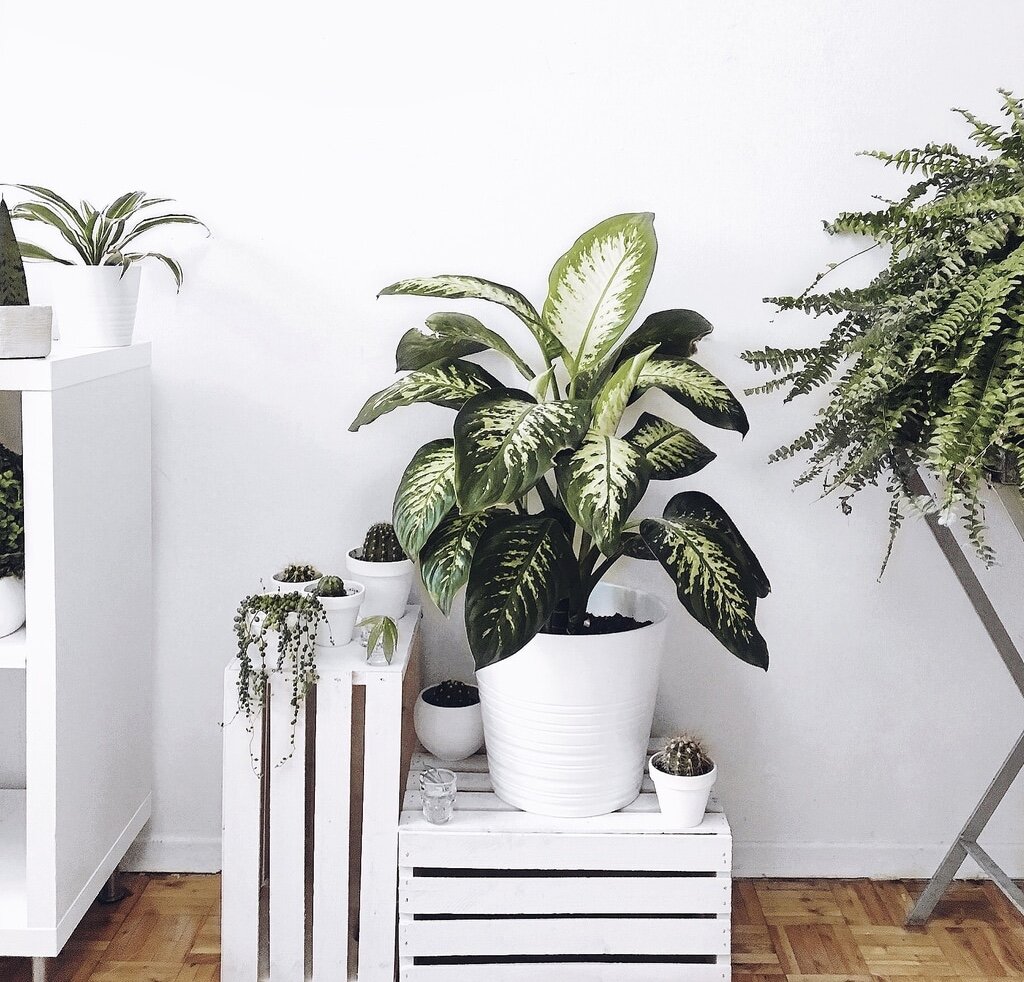Help! My Plants Keep Dying
Are you a plant lover like me? Keeping plants in your home leads to many benefits. They can boost your mood, concentration, and creativity. They also help clean indoor air by absorbing toxins, increasing humidity, and producing oxygen. Even though I loved all my plants and wanted to reap their benefits, I couldn’t keep my plants alive, and I didn’t know what I was doing wrong.
No need to worry anymore. Feel free to walk into your local garden center and pick up that one plant you’ve been eyeing. Keep reading and you will have all the tips and tricks needed to keep your plant alive and thriving.
You might think that you are cursed, but I’m here to tell you that’s not true. You’re probably just making the same mistakes I made when I first started on my plant journey. “There’s no such thing as green thumb or a black thumb, it's more about how much you pay attention to your plant,” says Christopher Satch, plant scientist, instructor at the New York Botanical Garden, and board member of the Manhattan Orchid Society.
Watering: What’s Too Much and What’s Too Little?
Watering your plants correctly is the key to keep your plants thriving, but it can also be very tricky. Water too much, and your plant can easily drown. Water too little, and the plant will dry up and die. For happy and healthy plants, you need to find a delicate balance.
According to the Patuxent Nursery, to tell whether or not your plant needs water, feel the soil, preferably near the edge of the pot. If the dirt feels dry and crumbly, it’s time to water. If it still feels damp, it probably doesn’t need more just yet. After a few weeks of doing this, you should begin to get the hang of knowing when your plants need water.
When giving your plant a drink, water it until the water begins to run out of the hole in the bottom of the pot, or until the soil no longer absorbs any water. If the water begins to pool on top of the soil refusing to soak in any more, then it’s time to stop watering.
It’s difficult to ascertain exactly how often you should water your plant because every plant species is different. You can read up on your specific plant to gain more information, but in general, it’s better to let your plant tell you when it needs water.
Source: Pinterest
Sunlight
The go-to move if you don’t know how much sunlight your plant needs is to stick it in a sunny window. Light is food for plants. So for them to do well, they need as much sunlight as possible. If you place your plant in low light, it’s like putting them on a diet.
Pay attention to see if your plant is lanky or has paler foliage. This may be a sign that it is not getting enough light. If so, gradually move it to a spot where it can get more light. If a plant stays in a certain spot for a long time, it can go into shock if it’s moved too suddenly, so you want to gradually transition it to a new area.
You should always consider where your plant originates from. Plants come from all parts of the world and have different light requirements. Some plants like succulents, cacti, or begonias are from lighter areas in their natural environment and they need quite a bit of direct sun. So, you want to place them in the sunniest window that you have.
Bugs!
Pests can be a real pain, and super annoying to deal with. My first tip for bug prevention is to go to your local nursery or reputable plant shop instead of going to bigger supply stores, like Lowes or Home Depot. Their plants have been sitting in a warehouse and probably haven't received the love and care that they would get from a nursery which specializes in that. Always try to shop local!
Source: Pinterest
I have a few more DIY tricks to keep the pests at bay:
To get rid of general bugs in your plants, push a clove of garlic into the plant’s soil. If the garlic sprouts and grows, just cut it back.
Small flies may occasionally appear around houseplants. These are called fungus gnats; they are harmless to humans, though their larvae can damage young roots. Letting the soil dry out a bit between waterings can discourage fungus gnats from calling your houseplants home.
Mealybugs and scale are commonly seen on houseplants. To get rid of them, here’s a quick concoction: create a mixture of equal parts rubbing alcohol and water and add a drop of dishwashing detergent. Apply this to troubled plants with a soft brush.
Now that you have everything you need in order to keep your plants alive, it’s time to go get one! Whether you’re a first-time plant buyer or a seasoned veteran in plant killing, you no longer have to worry. I’ve given you all the information, all you need to do is apply it. If you take care of your plants, they’ll take care of you.




